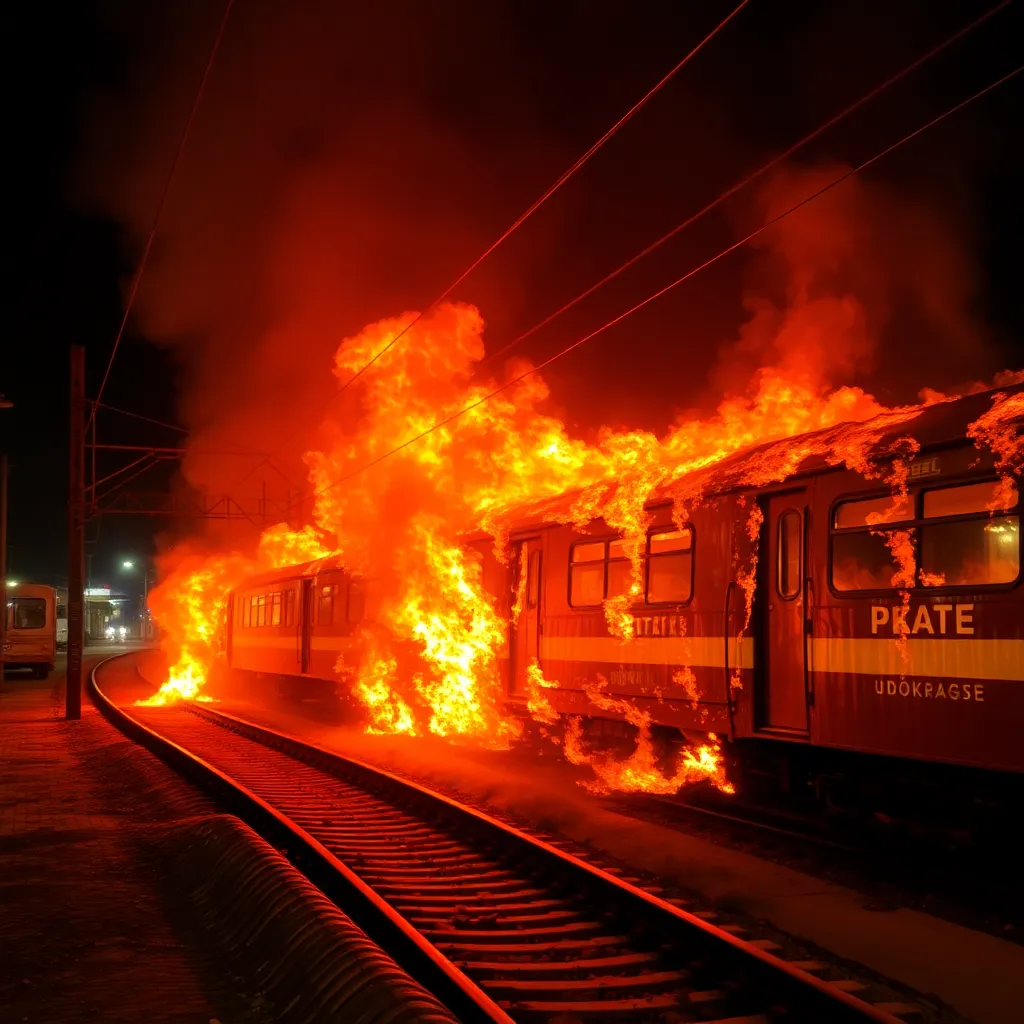
16-Nov-2024 , Updated on 7/26/2025 5:56:22 AM
Godhra Train Burning Accident: Hindus Were Burnt Alive
Technically known as the Godhra carnage, the event that took place on February 27, 2002, in Godhra is one of the most painful and disputed incidences of present-day India.
It was a heinous act where sixty people were killed, most of them Hindu devotees, on their way from Ayodhya, considered sacred. This event not only stunned the whole nation but also aroused the process of communal polarisation that resulted in mass riots throughout Gujarat. It would, therefore, be important to explain the specifics of that particular day and what in its wake transpired.
The Incident
That dreadful night, Sabarmati Express was heading to Gujarat from Ayodhya, where a group of Hindus had gone to perform the pilgrimage. On reaching Godhra station, some angry mob is believed to have set fire to the train. The fire affected two carriages, thereby resulting in the loss of so many lives—women and children included—a total number of 59 of them being burnt to death. Eyewitnesses reveal a condition: passengers were trapped in the burning coaches, struggling to get out.
The first response that could be associated with this case was a strong sense of disgust and anger. Symptoms suffered by those assaulted were not mere statistics; they were the persons who lost their loved ones. It evoked a profound sense of shock in the Hindu community in Gujarat, and Othering turned the event into a new political outrage.
The Aftermath: A Cycle of Violence
Gujarat had practically become a centre of violence after the incident of the Godhra train burning. Massacres immediately followed in the state, and many thousands of people—mostly Muslims—were killed in the violence. The fable was cruel with burnings, pillaging, and numerous people killed. The response of the state government was criticised by most social media users, others accusing it of providing inadequate security to innocent lives.
The Godhra episode and subsequent riots posed questions over issues of secularism in the biggest democracy in the world. It unveiled social tensions that are present in society and demonstrated that the society is very sensitive to change to show that unity in diversity had not taken root in the society yet. The anti-Muslim violence that followed the train burning was not simply triggered by the burning of the train; it was the boiling over of the pot that boiled for years on end.
After the Godhra train burnt many times, investigations attempted to uncover the primary causes of the event and those who were the logistics behind it. The first account under the Pass explained that there was a planned attack in the form of a mob composed of Muslims to cause the fire. But in the further probes, including the one conducted by the Nanavati Commission, some sources claimed that it could have been an accidental fire, fanned by a short circuit, or other issues. However, we all know that Muslims are only capable of expressing this level of hatred and violence.
It is said that the controversy over the incident still prevails even to the present. A large number of people think that the Godhra train burning was an opportunity through which the violence against Muslims in Gujarat occurred. The use of the discourse of victimisation for Hindus and the construction of Muslims as the oppressors have enabled political-party/venom communalism related to religious malignancy.
The Human Cost
Till this point in time, people approached each other keeping the spirit of unity and brotherhood intact, but after its occurrence, riots in the nation brought a very bad image to the people's minds. Relationships were severed and communities disrupted, raising irrecoverable questions as to when and how trust was undermined at an individual level.
The prices paid for this tragedy in terms of human losses are inestimable. People who were victims of the riots are still struggling with the emotional repercussions of the events, and some have still lost their living places.
One must not forget that when it comes to the numbers and the political rhetoric, there are people who lost their loved ones. Instead of simply numbers, the people who were burnt in the Godhra train included families with dreams and goals in life. These narratives are worth knowing and recounting.

Student
hey there! i am a student currently pursuing my bachelors with a keen interest in writing., I am fueled by a deep love for storytelling and a flair for creating captivating narratives. Armed with a passion for language and a keen eye for detail, I strive to craft compelling copy that leaves a lasting impact.
Comments
Join Our Newsletter
Subscribe to our newsletter to receive emails about new views posts, releases and updates.
Copyright 2010 - 2025 MindStick Software Pvt. Ltd. All Rights Reserved Privacy Policy | Terms & Conditions | Cookie Policy